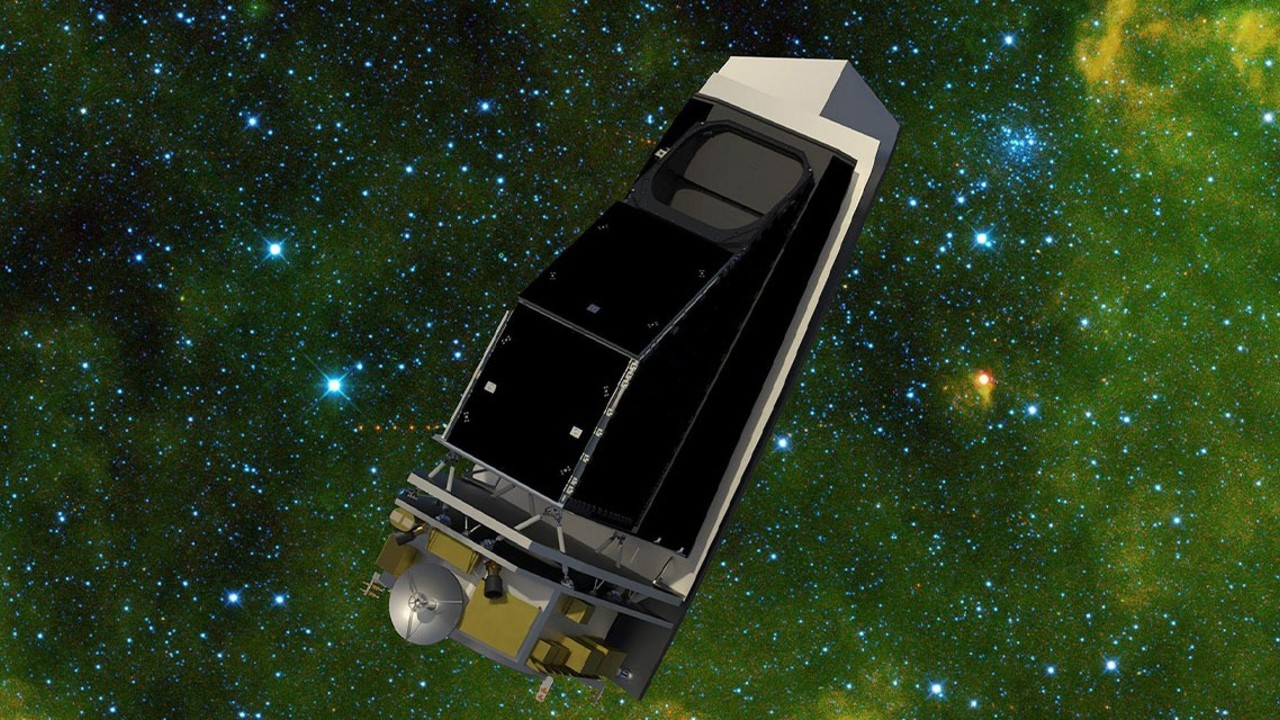
A NASA planetary defense mission will ride to space atop a SpaceX rocket two and a half years from now.
The agency announced on Friday (Feb. 21) that it has selected Elon Musk's company to launch its NEO Surveyor spacecraft, which will hunt for asteroids and comets that could pose a threat to Earth.
NEO Surveyor will lift off atop a Falcon 9 rocket from Florida's Space Coast no earlier than September 2027. The total value of the newly announced firm, fixed-price contract is about $100 million, which covers the launch and related services, NASA officials said.
NEO Surveyor will head to the Sun-Earth Lagrange Point 1, a gravitationally stable spot about 930,000 miles (1.5 million kilometers) from our planet. Once there, the satellite will use its 20-inch (50-centimeter) telescope to scan the heavens in two infrared wavelengths.
"It will be capable of detecting both bright and dark asteroids, the latter being the most difficult type to find with existing assets," NASA officials said in a statement on Friday.
"The space telescope is designed to help advance NASA's planetary defense efforts to discover and characterize most of the potentially hazardous asteroids and comets that come within 30 million miles [50 million km] of Earth's orbit," they added. "These are collectively known as near-Earth objects, or NEOs."
NEO Surveyor will conduct a five-year survey, with the goal of finding at least two-thirds of the undiscovered NEOs that are at least 460 feet (140 meters) wide — big enough to cause major damage on a regional scale should they hit Earth, NASA noted.
Get the Space.com Newsletter
Breaking space news, the latest updates on rocket launches, skywatching events and more!
Related: Construction begins on NASA's NEO Surveyor asteroid-hunting telescope
NEO Surveyor will be the third planetary defense mission that SpaceX has launched, as the company noted on X.
In November 2021, a Falcon 9 sent NASA's DART (Double Asteroid Redirection Test) probe on its way to the binary asteroid system Didymos. Ten months later, DART slammed into the smaller space rock in the system as planned, showing that humanity has the ability to nudge a potentially hazardous asteroid off course if need be.
And Europe's Hera mission launched atop a Falcon 9 in October 2024. Hera is on its way to the Didymos system, to study the effects of DART's impact in detail.
Join our Space Forums to keep talking space on the latest missions, night sky and more! And if you have a news tip, correction or comment, let us know at: community@space.com.

Michael Wall is a Senior Space Writer with Space.com and joined the team in 2010. He primarily covers exoplanets, spaceflight and military space, but has been known to dabble in the space art beat. His book about the search for alien life, "Out There," was published on Nov. 13, 2018. Before becoming a science writer, Michael worked as a herpetologist and wildlife biologist. He has a Ph.D. in evolutionary biology from the University of Sydney, Australia, a bachelor's degree from the University of Arizona, and a graduate certificate in science writing from the University of California, Santa Cruz. To find out what his latest project is, you can follow Michael on Twitter.
